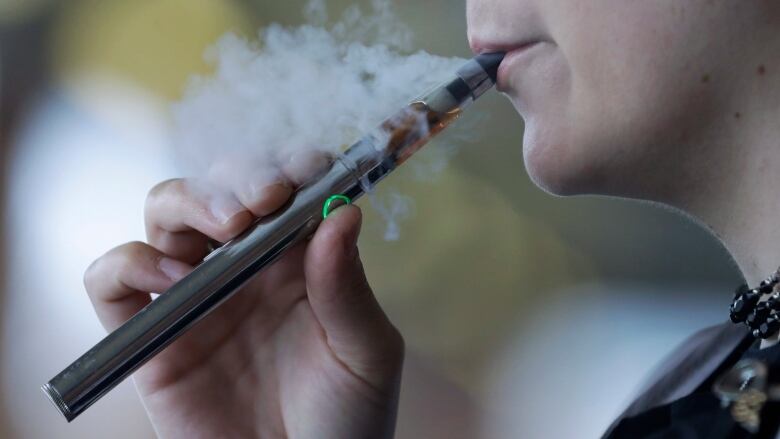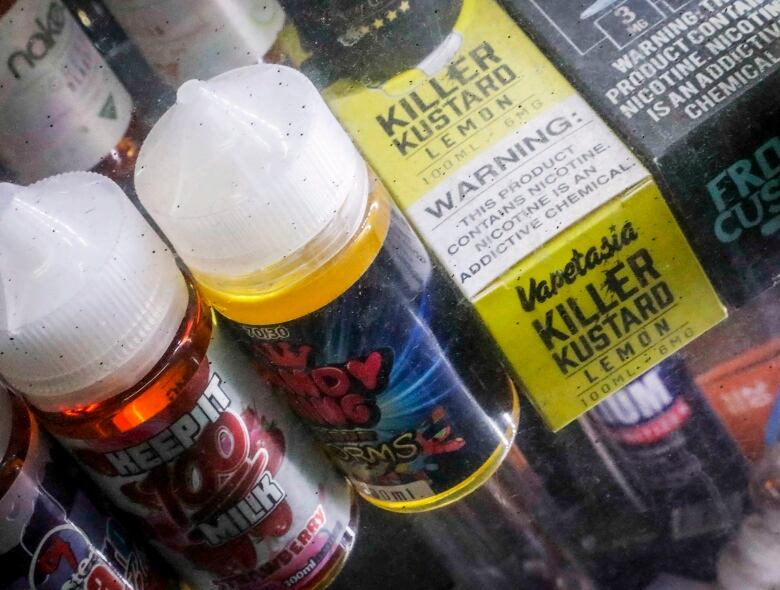Vaping-related lung injury may have 'morethan one root cause,' CDC says
'We cannot stand by and watch a new generation of Canadians become dependent on nicotine,' Canadian MDs say

People with lung injury associated with vaping or e-cigarette use could also have flu and other respiratory illnesses, U.S. health officials said Friday in updating advice to health-care professionals and the public.
As of Tuesday, 1,299 confirmed or probable cases of lunginjuries linked to vaping were recorded in the U.S. in every state except Alaska. About 80 per centof patients were under age 35. A total of 26 deaths have beenlinked to the illnessdeath among people aged 17 to 79.
"I think there will be multiple causes and potentially morethan one root cause," Dr. Anne Schuchat of the U.S. Centers forDisease Control and Prevention told journalists.
The CDC also updated its data on the substances used in e-cigarettes or vaping products based on self-reports from573 patients:
- 76 per centreported using tetrahydrocannabinol (THC)-containing products (the psychoactive ingredient in cannabis), with or without nicotine-containing products.
- 58 per centreported using nicotine-containing products.
- 32 per centreported exclusive use of THC-containing products.
- 13 per centreported exclusive use of nicotine-containing products.
No single product or substance has been linked to all cases, and more information is needed to know whether a single product, substance, brand or method of use is responsible for the outbreak.
U.S. Food and Drug Administration (FDA) officials are testing samples for nicotine, THC and other cannabis compounds,metals,and other additives, pesticides and toxins as well as cutting agents, which are used to stretch the amount of THC in vape cartridges.
Mitch Zeller, director of FDA's Center for Tobacco Products,said the agency has tested225 THC-containing products andfound Vitamin E acetate a cutting agent in nearly half ofthem.
As the flu season gets underway in North America,Dr. Ram Koppaka, a medical officer with the CDC's National Center for Immunization and Respiratory Diseases, recommended that clinicians maintain a "high index of suspicion" for influenza and other respiratory illnesses in people who also have a history of e-cigarette use.
An individual may have lung injury, an infection or both,Koppakasaid.
Readmission possibility
Schuchatsaid "less than five" patients have been readmitted after being discharged for the illness based on preliminary reports.
The CDC published its Morbidity and Mortality Weekly Reportwith updated guidance for clinicianson Friday.The report's authors named theillness "e-cigarette, or vaping, product use associated lung injury,"or EVALI.
Schuchatadvised physicians and other clinicians to incorporate advice on discouraging use of e-cigarettes with cannabis and nicotine when patients are hospitalized and after discharge. They should also keep in mind that recurrence or worsening of the lung injury is possible.

It's not clear if those readmitted started vaping again. It is possible that vaping, thelung injury itself or steroid treatment for it could set someone up for an increased risk of infection.
Canadian warning for youth
About15 per cent of thelung injury cases in the U.S. have been in those under 18 years old,Schuchatsaid.
On Friday, Canada's chief public health officer and all provincial and territorial medical officers of health said they're increasingly concerned by the substantial rise of vaping among Canadian youth.
"We cannot stand by and watch a new generation of Canadians become dependent on nicotine or be exposed to products that could have significant negative consequences for their health," theCouncil of Chief Medical Officers of Health said in a statement.
"InCanada, we have seen the first cases of pulmonary illness related to vaping and a number of other incidents are under investigation. Together with colleagues inthe United States, we are all doing our part to find out what is causing these illnesses. Until more is known, we repeat our call for Canadians to consider refraining from vaping."
In particular, they advised refraining from using e-cigarettes or vaping products that have been purchased illegally, including any products that contain THC.
In the U.S., some states, including NewYork, Michigan and Rhode Island, have banned the sale offlavoured e-cigarettes, while Massachusetts has gone a stepfurther by imposing a four-month ban on all vaping products.
The Canadian medical officers of health said flavourings have not necessarily been tested for safety when inhaled.
Vaping also includesharmful and potentially harmful substances such as nicotine, solvents, cancer-causing chemicals (e.g., formaldehyde) andheavy metals, they said. "It is not clear what underlying risk there may be from inhalation of ultra-fine particles created by the mechanism of vaping technology that permits inhalation deep into the lung."
They called for measures including restrictions on the accessibility and availability of vaping products, reducingthe appeal of products to youth, including plain packaging, health warnings and regulating the sale and marketing of vaping products and flavourings, and putting in place school and community policies to reduce use.
With files from Reuters












_(720p).jpg)


 OFFICIAL HD MUSIC VIDEO.jpg)
.jpg)



























































































